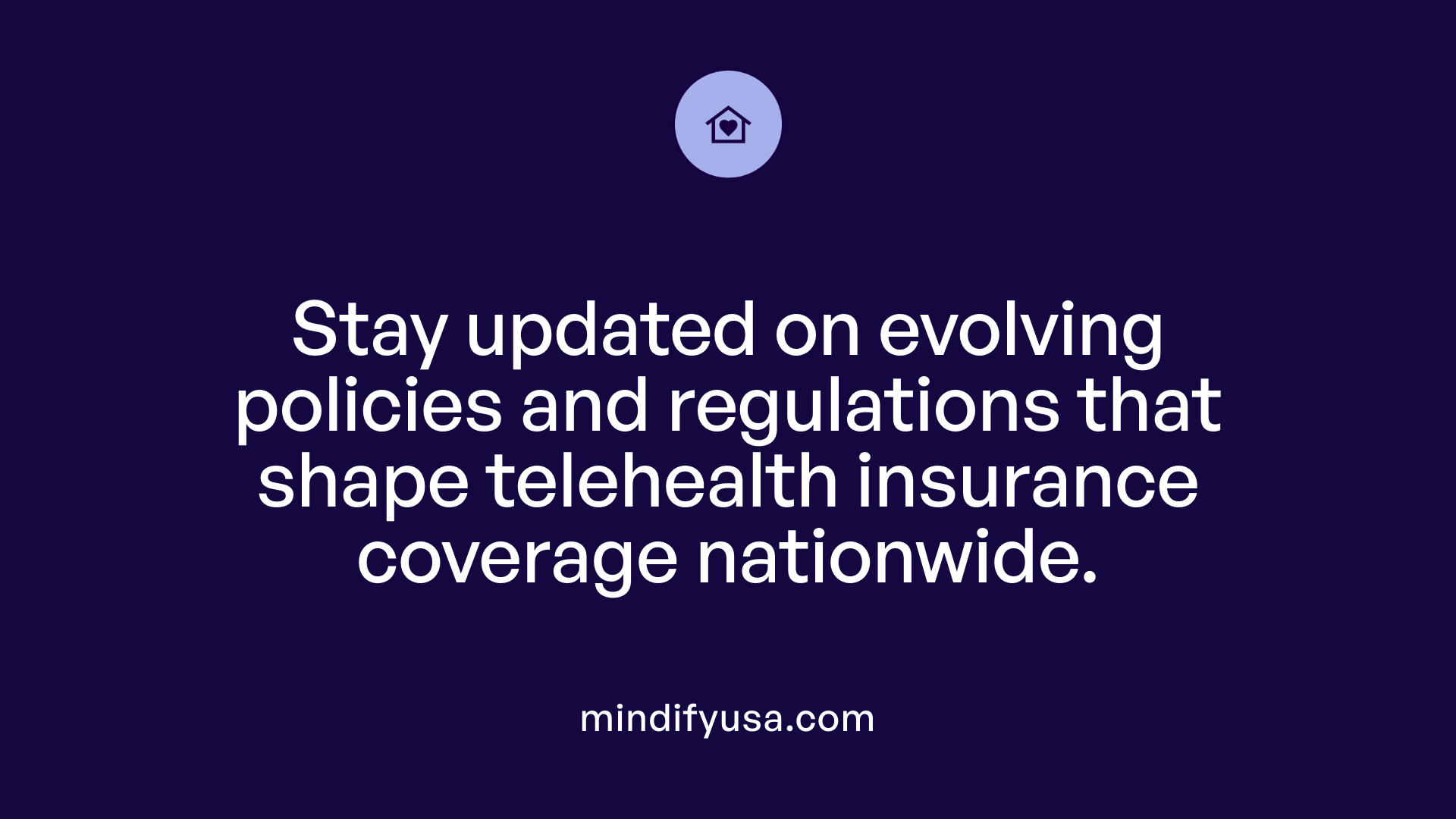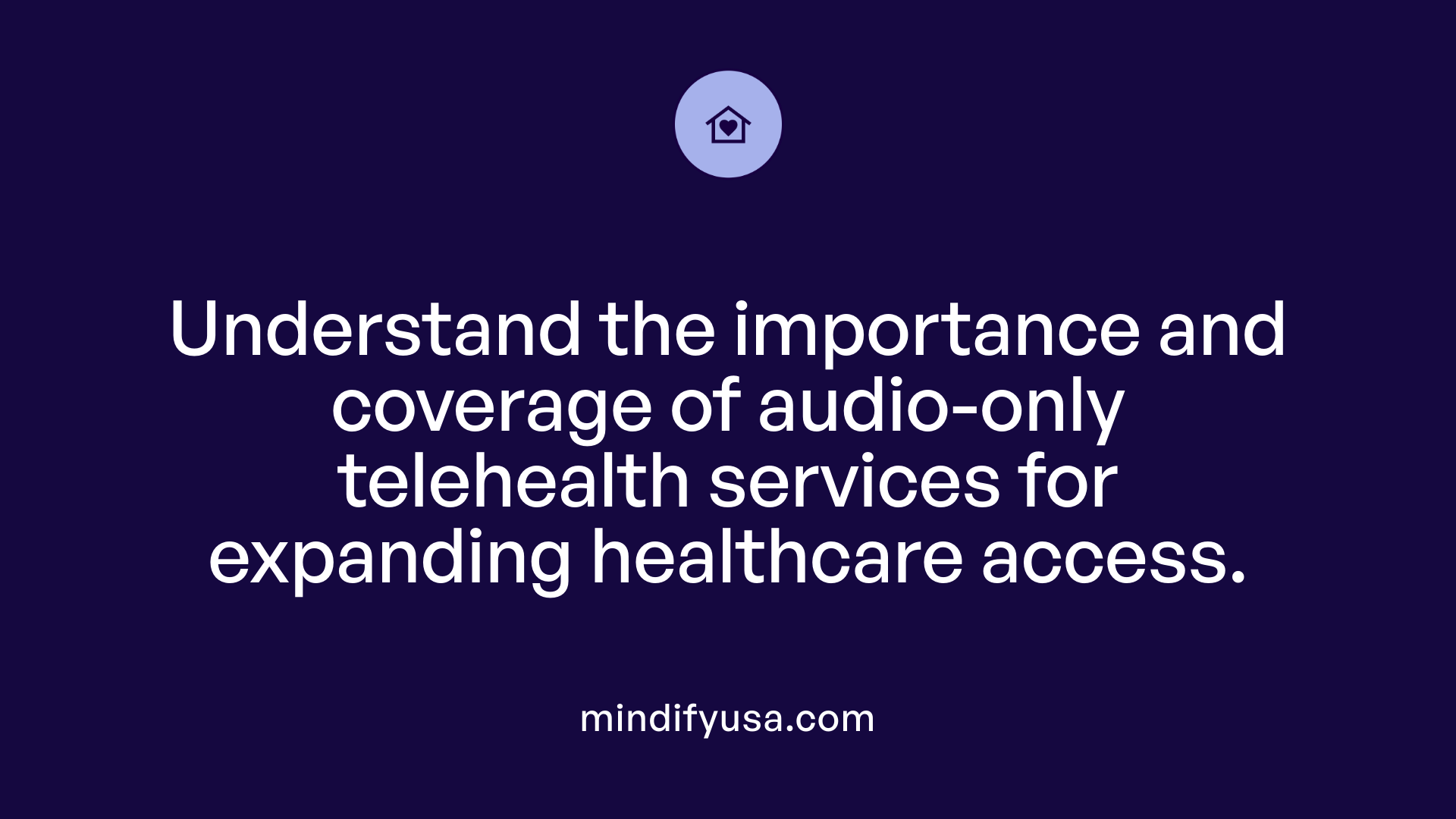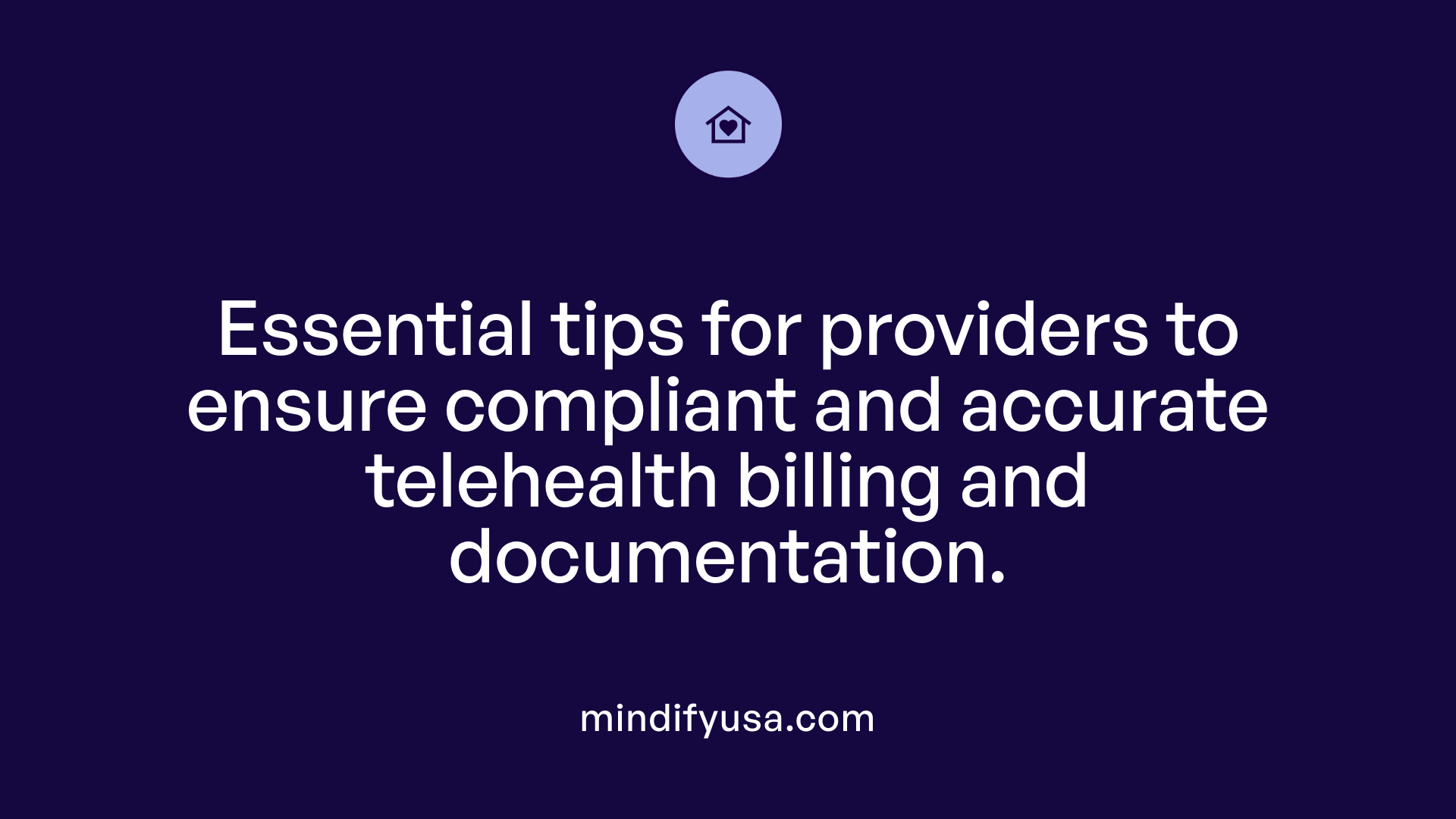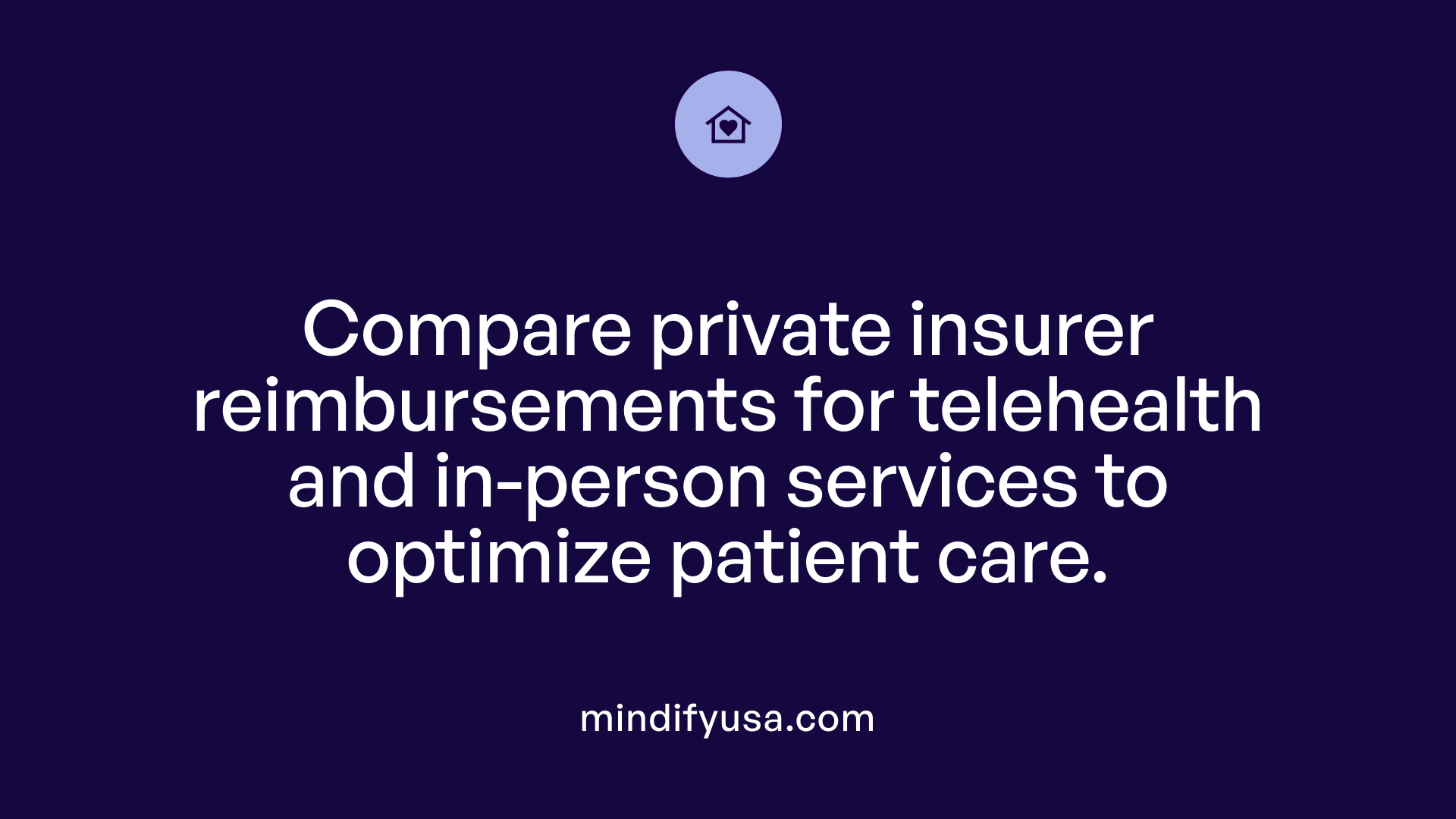Navigating Telehealth Billing: What Patients and Providers Need to Know
Telehealth has become an integral part of healthcare delivery, especially during the COVID-19 pandemic. As virtual care options expand, questions around billing for these services and whether they are covered by insurance have become increasingly important for providers and patients alike. This article provides a comprehensive overview of telehealth billing practices, insurance coverage policies across different payer types, recent legislative changes, and best practices to ensure proper reimbursement.
Current Policies and Regulations Governing Telehealth Insurance Coverage

What are the current policies and regulations regarding telehealth insurance coverage?
The landscape of telehealth insurance coverage is continually evolving, with a complex mix of federal and state regulations. During the COVID-19 pandemic, federal policies were temporarily expanded to include broader telehealth services. Medicare, for example, extended coverage through September 30, 2025, allowing beneficiaries to access a wide range of services, including behavioral health, physical and occupational therapy, from their homes, regardless of geographic location. These policies also permit the use of audio-only services, such as phone calls, especially helpful for patients with limited technology access.
Private insurance plans have increasingly adopted coverage mandates, with over 24 states implementing laws that require reimbursement rates for telehealth services to be equal to those for in-person visits—known as payment parity. Many of these laws also address cost-sharing requirements, aiming to improve affordability.
State Medicaid programs vary significantly; some states reimburse for physical therapy via telehealth, while others impose restrictions or lack coverage altogether. This variation stems from differing state policies and regulations.
Regulatory standards also govern provider licensing, establishing that clinicians must be licensed in the state where the patient is located. HIPAA compliance remains essential, with providers needing secure, encrypted platforms for delivering telehealth services.
In addition, legislation has addressed the authority to prescribe medications remotely and the use of electronic prescriptions, enhancing the scope of telehealth care.
Overall, regulations aim to promote access and protect patient rights, but discrepancies between states and insurance providers mean the level of coverage and reimbursement can differ significantly. Continued legislative efforts seek to standardize and expand telehealth policies for equitable access nationwide.
Insurance Coverage of Telehealth Across Payer Types
Are telehealth services covered by insurance across different payer types such as Medicare, private insurance, and Medicaid?
Coverage for telehealth services varies depending on the type of insurance provider. Medicare, particularly through Medicare Part B, offers substantial coverage for telehealth services, including mental health counseling and evaluation and management visits. During the COVID-19 Public Health Emergency, Medicare expanded its coverage, allowing services even from the patient’s home and including audio-only options. Reimbursements are generally aligned with in-person service rates, though patients typically pay a 20% coinsurance.
Private insurance policies also widely cover telehealth services, with over 22 states enacting laws that require parity—meaning they reimburse telehealth at the same rate as in-person care. Most private insurers, like Blue Cross Blue Shield and United Healthcare, incorporate telehealth into their plans, often without additional costs to the patient. However, coverage specifics, such as which services are included and any prior authorization needs, vary by insurer and state regulations.
Medicaid’s approach to telehealth coverage is more variable. Policies differ from state to state, with some states offering expansive coverage that includes physical therapy and mental health services, while others implement more limited policies. Many states have expanded Medicaid telehealth services during emergencies, and some have made audio-only services permanently available.
In summary, most insurance plans—public and private—cover at least a portion of telehealth services. Nonetheless, coverage details, eligibility, and reimbursement rates depend heavily on state laws, the specific insurer’s policies, and provider qualifications. Patients should verify their benefits prior to scheduling a telehealth session to understand coverage and costs.
Billing Codes, Modifiers, and Practices for Telehealth Services
What billing codes and practices are used for telehealth services?
Telehealth services are billed using specific CPT codes that reflect the type of service provided, such as evaluation and management codes (e.g., 99202-99215). These codes are typically the same ones used for in-person visits, but they require the addition of certain modifiers and place of service codes to specify that the service was delivered virtually.
Common modifiers include -95 to denote real-time interactive video services, and -93 for audio-only telehealth sessions. Additional modifiers like -GQ indicate asynchronous telecommunication, while -FQ may be used for services at Federally Qualified Health Centers or Rural Health Clinics. Accurate modifier application is essential to inform payers of the telehealth nature of the service.
Place of Service (POS) codes are also necessary. POS 02 indicates telehealth services provided outside the patient’s home, suitable for many scenarios, whereas POS 10 designates services delivered directly in the patient's home, especially relevant for Medicare billing. Some payers have specific requirements; for example, Medicare prefers POS 11 with certain modifiers or specific HCPCS codes like Q3014 for originating site fee reimbursement.
Proper coding practices involve combining the correct CPT codes with the appropriate POS and modifiers, ensuring compliance with payer guidelines. This accurate coding helps facilitate reimbursement, minimizes claim rejections, and ensures legal and billing compliance for telehealth services.
Summing up, the billing process for telehealth hinges on using the right CPT codes, applying the necessary modifiers accurately, and selecting the correct place of service code—these steps are fundamental for successful billing and reimbursement.
Reimbursement Processes and Influencing Factors
How do reimbursement processes work for telehealth, and what factors influence coverage?
Reimbursement for telehealth services involves submitting claims to insurance providers, government programs like Medicare and Medicaid, or private insurers using established billing codes such as CPT and HCPCS. Accurate coding, including appropriate place of service and modifiers, is vital for successful reimbursement.
Most payers aim to reimburse telehealth at rates similar to in-person visits, especially under recent legislation and parity laws. However, reimbursement levels can vary by region, service type, and insurer policies, with some payers reimbursing less for certain telehealth services.
Factors influencing whether telehealth services are covered include legislative mandates requiring coverage parity, regional regulations, and the provider's credentials and licensure in the patient's location. Policies introduced or expanded during the COVID-19 pandemic, such as waivers on geographic restrictions and allowances for audio-only services, temporarily increased access and reimbursement.
Accurate documentation, prior authorization when needed, and awareness of regional and payer-specific rules help ensure claims are processed smoothly. For example, during the pandemic, many insurers waived copayments, but coverage policies still require verification and adherence to specific billing practices to ensure reimbursement.
In summary, the reimbursement landscape for telehealth is shaped by legislation, insurer policies, provider credentialing, and regional considerations, with ongoing changes influencing how providers bill and get paid for virtual care.
Impact of COVID-19 and Legislative Changes on Telehealth Billing
How have recent laws and policies, such as those during the COVID-19 pandemic, affected telehealth billing and coverage?
The COVID-19 pandemic prompted major legislative shifts that transformed telehealth from a supplementary service into a central part of healthcare delivery. During this period, federal and state governments enacted temporary flexibilities that broadened telehealth billing and coverage options.
One of the most significant changes was the relaxation of geographic and originating site restrictions, allowing patients to access telehealth services from their homes across the entire U.S., regardless of location. This change increased access for rural populations and those with limited transportation options.
Insurance providers, including Medicare and private insurers, expanded their coverage to include audio-only visits, which proved critical for patients lacking video capability or internet access. Reimbursement rates for these audio-only services were often made equivalent to in-person visits, ensuring providers received fair compensation.
Legislative extensions through September 30, 2025, have maintained many of these telehealth flexibilities, especially for behavioral health services, which continue to be delivered via telehealth from urban and rural areas.
However, upcoming regulations may revert some restrictions, such as requiring patients to be in specific settings or limiting the types of providers eligible for telehealth services. This transition could impact ongoing access, especially for vulnerable patient groups.
Overall, the emergency policies introduced during COVID-19 vastly increased telehealth utilization, normalized reimbursement for remote services, and set a precedent for permanent integration of telehealth into mainstream healthcare reimbursement policies. Providers and patients alike benefited from this transformation, although pending legislative decisions will dictate the future scope and permanence of these changes.
Coverage of Audio-only Telehealth by Insurance and Policy Considerations

Is audio-only telehealth covered by insurance?
Yes, audio-only telehealth is covered by insurance; however, the extent and conditions of coverage depend on the specific payer and regional regulations. During the COVID-19 public health emergency, Medicare notably expanded its coverage policies, allowing patients to receive telehealth services via audio-only platforms and reimbursing these services at the same rate as video visits. This change significantly improved access for patients without reliable high-speed internet or suitable devices.
Starting in 2025, the Medicare Physician Fee Schedule permanently broadened the definition of telehealth to explicitly include audio-only communication for various services, especially behavioral health. It also extended these flexibilities through September 30, 2025, ensuring continued access. Many private insurers and Medicaid programs also adopted similar policies, though variations exist based on state laws and individual plans.
Overall, audio-only telehealth remains a vital option for many, expanding access for patients in broadband-limited areas or those uncomfortable with video technology. The ongoing policy adjustments aim to maintain, and potentially expand, this access as telehealth becomes a permanent part of healthcare delivery.
Guidance for Providers on Proper Telehealth Billing and Documentation

What guidance do healthcare providers need to follow for proper billing of telehealth services?
Healthcare providers must stay compliant with current CPT® and HCPCS coding standards when billing for telehealth services. This involves choosing the correct codes such as 99421-99423 for virtual check-ins or e-visits, and 99202-99215 for evaluation and management services. It is also essential to include appropriate modifiers, like 95 or GT, to indicate telehealth delivery. Each payer, including Medicare, Medicaid, and private insurers, often has specific requirements for codes, modifiers, and documentation.
Providers should verify coverage policies before each service, especially since guidelines can change frequently. For example, during the COVID-19 public health emergency, some flexibilities allowed audio-only services to be reimbursed at parity, but these policies are subject to future updates.
Documentation must detail all aspects of the service, including session times, platform used, provider and patient locations, and patient consent. Licensing verification and location data are critical to prevent claim denials.
To navigate these complexities, healthcare providers are encouraged to consult resources from CMS, the AMA, and individual payers. Utilizing practice management software can streamline coding, documentation, and insurance verification processes.
In summary, successful telehealth billing hinges on precise coding, thorough documentation, insurance verification, and awareness of payer-specific rules. Keeping updated with policy changes helps providers maximize reimbursement and maintain compliance in this expanding field.
Private Insurance Payments Versus In-person Care
 How do private insurer payments for telehealth compare to those for in-person care?
How do private insurer payments for telehealth compare to those for in-person care?
Private insurance companies generally reimburse telehealth services at rates similar to in-person visits. Most providers report that payments for different service types, such as evaluation and management or mental health therapy, are comparable whether delivered remotely or face-to-face.
Empirical data from 2021 supports this trend. The average payment for evaluation and management claims via telehealth was approximately $99, while in-person services averaged around $98, after considering factors like provider variation, region, and patient severity. Likewise, reimbursement for mental health therapy sessions did not differ markedly between the two modalities.
This parity in payments encourages the adoption of telehealth, especially as many states enforce parity laws requiring private insurers to meet or exceed reimbursement levels for virtual care. Such policies are designed to promote broader access to healthcare and maintain service quality.
Across different regions, insurers tend to reimburse telehealth within 10 percent of in-person rates for the majority of claims, though a small percentage of providers experience either higher or lower payments depending on specific plan policies and service types.
Overall, the reimbursements for telehealth are aligned with those for in-person visits, facilitating continued growth in virtual health services and supporting patient access.
Alternative Payment Options and Ancillary Support for Telehealth
Are there alternative payment options related to telehealth, such as HSAs or FSAs?
Yes, there are several options that help patients pay for telehealth services more flexibly. Health Savings Accounts (HSAs), Flexible Spending Accounts (FSAs), and Health Reimbursement Arrangements (HRAs) are popular pre-tax tools that can be used to cover qualified medical expenses, including telehealth visits.
These accounts offer tax advantages, reducing the overall cost burden on patients. Funds from HSAs and FSAs can often be used for telemedicine consultations, remote monitoring devices, and related health expenses. Patients may pay through linked debit cards or submit receipts for reimbursement.
Benefits of pre-tax payment methods
Using pre-tax accounts like HSAs and FSAs offers significant savings by lowering taxable income. This can make healthcare spending more affordable compared to paying with after-tax dollars. Additionally, utilizing these accounts simplifies the payment process and promotes transparency.
Streamlining payment processes
Many healthcare providers now accept HSA and FSA payments through secure online portals compliant with HIPAA. This streamlines billing, reduces administrative errors, and ensures that transactions are convenient for both patients and providers. Automated processing and integration with practice management software can further enhance the efficiency of billing and reimbursement.
Supporting telehealth access through financial tools
Financial instruments like HSAs, FSAs, and HRAs help expand access to telehealth by lowering out-of-pocket costs. Patients are more likely to engage in remote care when they can pay using tax-advantaged accounts. For providers, accepting these forms of payment can increase patient satisfaction and retention, while also simplifying cash flow management.
By leveraging these financial tools, the telehealth ecosystem becomes more accessible, affordable, and seamless for all stakeholders involved.
Bringing Clarity to Telehealth Reimbursement Strategies
As telehealth continues to be a vital component of healthcare delivery, understanding the intricacies of billing practices and insurance coverage policies is essential for providers and patients alike. The evolving regulatory landscape, including recent legislative extensions and permanent policy changes, aims to enhance coverage, simplify reimbursement, and promote equitable access. Proper coding, documentation, and verification remain critical to ensure successful claims processing. Additionally, with the rise of alternative payment options and the ongoing support for audio-only services, telehealth’s reimbursement framework is becoming more flexible and inclusive. Staying informed of policy updates and leveraging technology can help healthcare professionals optimize revenue cycles while delivering high-quality virtual care. Overall, the future of telehealth billing is focused on transparency, efficiency, and expanding access for diverse patient populations.
References
- Telehealth Insurance Coverage - Medicare
- Private insurance coverage for telehealth
- 10 Telehealth Billing Myths - Navigating the Insurance Maze
- Telehealth Billing for Behavioral Health: Complete Guide to Virtual ...
- Private insurer payments for telehealth and in-person claims during ...
- Is Telehealth Covered by Insurance? - PtEverywhere
- Billing for telebehavioral health | Telehealth.HHS.gov






































































































